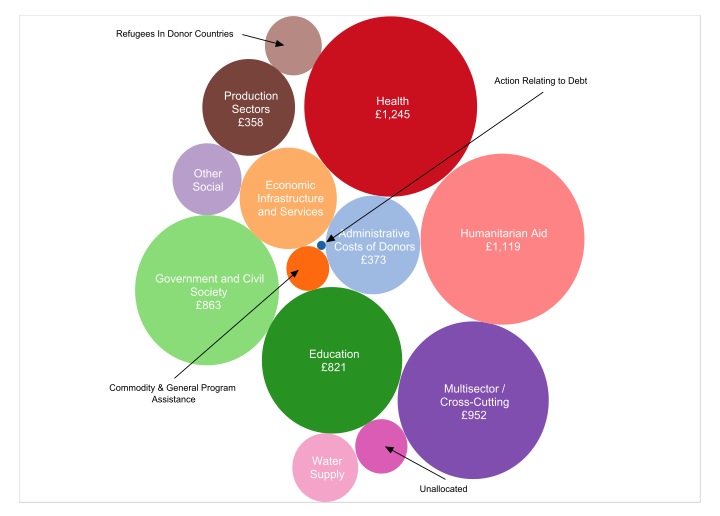On 14 July 2016, the Prime Minister Theresa May announced her new Cabinet, following a significant reshuffle and re-structure of Government. In this context, researchers from all over Newcastle University express their thoughts on the challenges and opportunities for the Government in the Ideas for May’s Ministers blog series, considering how individuals, communities and societies can thrive in times of rapid, transformational change. Dr Venda Louise Pollock, Director of Newcastle University Institute for Creative Arts Practice, targets art education in this idea for Justine Greening.
To: The Rt. Hon Justine Greening, MP, Secretary of State for Education.
From: Venda Louise Pollock, Director, Newcastle University Institute for Creative Arts Practice
The extraordinary cultural and creative talents we share contribute to the well-being of our society, our economic success, our national identity, and to the UK’s global influence. These are precious returns, a powerful cocktail of public good and commercial return.[1]
Warwick Commission on the Future of Cultural Value
According to the GREAT Britain campaign,[2] launched in 2012 to build on the interest and success (economic and reputational) of the Diamond Jubilee and London Olympics and Paralympics, culture and creativity are mainstays of what makes Britain distinctive. With posters boasting Quentin Blake’s illustrations of Roald Dahl’s stories to headlines celebrating Shakespeare, and partners drawn from a breadth of creative fields – Aston Martin and Mulberry to name but two – the campaign has secured a confirmed economic return of £1.9bn to date. This is only part of the story.
Creative industries are worth almost £10m per hour to the nation’s economy with an overall worth of £84.1bn per year.[3] The sector is growing at almost twice the rate of the wider UK economy and, at the launch of the recent DCMS report in January 2016, Ed Vaizey pledged that the government was ‘determined to ensure its continued growth and success.’[4]
Too often our appreciation of culture and creativity is premised on instrumental rather than intrinsic terms. The AHRC’s recent Cultural Value Report[5] speaks of the “imperative to reposition first-hand, individual experience of arts and culture at the heart of the inquiry into cultural value” and goes on to acknowledge the ability of arts and cultural engagement to “help shape reflective individuals”, and produce engaged citizens. Thinking specifically about education, the report shows, as many other studies have, how arts make an important contribution to learning through their impact on cognitive abilities, skills in problem solving and communication, as well as improving students’ confidence.
This is all in addition to the simple fact that creativity and culture enhance our lives, often in ways we cannot explain or articulate but which are fundamental.
If the government is determined to ensure the growth and success of our creative and cultural sector, this support should be embedded within our education system by not introducing the EBacc in its current form – for the young people of today are those who will shape futures, just as you, now, are shaping theirs.
As a performance measure (not a qualification in itself) that includes five ‘core’ academic subjects: English, Mathematics, History or Geography, the Sciences and a Language[6], the EBacc has created a value perception in our education system. While it is important to note that there is still room within the broader curriculum for students to take creative and technical subjects, not including them in the EBacc has sent a signal that these are not worthy of ‘performance managing’ or ensuring excellence within. This is having a significant impact. As widely reported at the time of the EBacc debate in Parliament (4th July), there has been a significant decline in the uptake of arts and technical subjects. An IPSOS Mori study in 2012 also found that at key stage 4 drama and performing arts were no longer taught in nearly a quarter of schools, 17% had withdrawn arts courses and 14% design technology.[7]
Although students can still opt for creative subjects, in reality their choice will be limited by availability – and yet building on Michael Gove’s increasing parental choice,[8] the government wants to improve choice for students.[9] Some have argued that creative subjects are needed for weaker students, but, in a critique of the EBacc, the government’s former education secretary has acknowledged this is ‘narrow minded’ as countries with the lowest youth unemployment and highest skilled workforce are those where technical and academic subjects are studied together.[10]
At the Party Conference, it was outlined that linking paths from early years to apprenticeships was a crucial step to secure the building blocks underpinning educational reforms which aim to help young people achieve success in the future. In this context of joined up thinking it seems out of kilter to lessen emphasis on the subject areas that are, currently, major drivers of our economic growth. In creating a level playing field for students, we should do so for subject choice also.
In Scotland creativity is gaining increased importance within education with ministers endorsing a national Creative Learning Plan which recognizes that creativity skills help learners be motivated and ambitious for change, confident in their capabilities and own viewpoint, possess transferable skills, and work collaboratively.[11] In undertaking creative work, students will have to think well beyond the box to innovate, to collaborate, to rise to challenges, grow in confidence and learn from failure, to take risks, be self-motivated and disciplined. These are important skills regardless of where you end up in life. The Creative Learning Plan acknowledges that the skills learnt from creativity are needed to tackle life and work in an ‘increasingly uncertain and rapidly changing economic and social environment.’
Beyond skills, I don’t want my nephews growing up reading Shakespeare but being unable to imagine it or feel that embodied experience, to view art or listen to music without being able understand it as both expression and technical skill, or to read poetry without having themselves wrestled with words. We should aspire to excellence within our education system – in terms of creative teaching methods, the teaching of creative subjects and in exposing our young people to the best of culture.
I would recommend:
- reconsideration of the introduction of the EBacc in its current form
- the use of rigorous research to inform the development of policy with regard to the role and value of creativity and creative learning
- an approach to education that recognizes, as Eric Booth, has argued, the potential for creativity to be the key that unlocks the Curriculum for Excellence[12]
[1] Warwick commission final report
[2] http://www.greatbritaincampaign.com/#!/home
[3] https://www.gov.uk/government/news/creative-industries-worth-almost-10-million-an-hour-to-economy
[4] https://www.gov.uk/government/news/creative-industries-worth-almost-10-million-an-hour-to-economy
[5] http://www.ahrc.ac.uk/documents/publications/cultural-value-project-final-report/
[6] https://www.gov.uk/government/publications/english-baccalaureate-ebacc/english-baccalaureate-ebacc
[7] https://www.gov.uk/government/publications/the-effects-of-the-english-baccalaureate
[8] https://blogs.ncl.ac.uk/nisr/category/ideas-for-mays-ministers/
[9] http://blogs.spectator.co.uk/2016/10/full-text-education-secretary-justine-greenings-conference-speech/
[10] http://schoolsweek.co.uk/utcs-architect-slams-narrow-ebacc/
[11]http://www.educationscotland.gov.uk/learningandteaching/approaches/creativity/about/
[12]http://www.educationscotland.gov.uk/learningandteaching/approaches/creativity/about/







